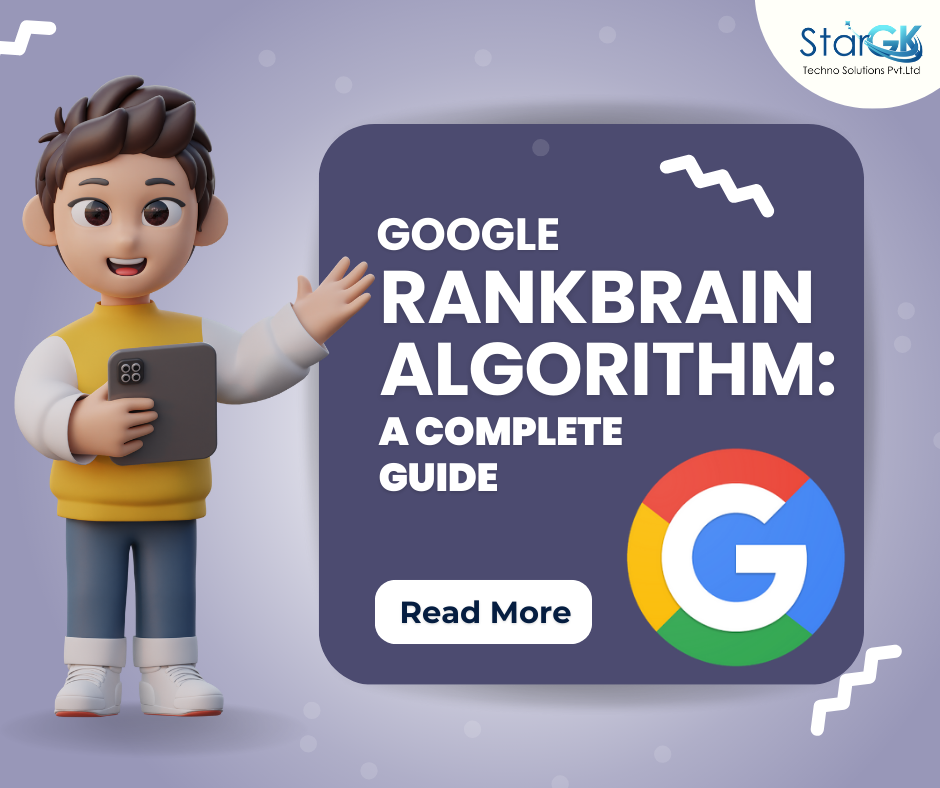
Google RankBrain Algorithm: A Complete Guide
In the ever-changing world of digital marketing, staying on top of the latest search engine algorithms is important for businesses aiming to Maximise their online visibility. Google, being the most widely used search engine, continually refines its algorithms to enhance user experience and provide more relevant search results. One such revolutionary algorithm that has significantly impacted Google’s search results is the RankBrain Algorithm.
Understanding RankBrain Algorithm
Google RankBrain, introduced in 2015, is a machine learning-based algorithm designed to interpret the intent behind user queries and deliver more accurate search results. Unlike traditional algorithms, RankBrain has the ability to learn and adapt over time, making it an integral part of Google’s complex search engine ranking system.
Role of RankBrain in Google Search Engine Optimization
The primary objective of RankBrain is to improve the overall quality of search results by understanding the context and intent of user queries. This means that traditional keyword-centric strategies are no longer sufficient for achieving high rankings on Google. RankBrain takes into account various factors, including user behaviour, search history, and the context of the query, to provide personalised and relevant results.
Contextual Understanding
RankBrain goes beyond the literal interpretation of keywords and focuses on understanding the context of a search query. It considers synonyms, related terms, and user intent, enabling it to deliver more accurate and contextually relevant results. This shift towards contextual understanding emphasises the importance of creating content that not only includes target keywords but also addresses the broader context of the topic.
User Behaviour Analysis
User behaviour is a critical factor in the RankBrain Algorithm. Google analyses how users interact with search results, including click-through rates, bounce rates, and dwell time. Content that engages users and keeps them on a page for a longer duration is likely to receive a higher ranking. This emphasises the significance of creating high-quality, informative content that meets the needs of the target audience.
Semantic Search
Semantic search, a key component of RankBrain, involves understanding the meaning behind words and phrases. Instead of relying solely on exact keyword matches, Google’s algorithm can now comprehend the context and intent of a query, allowing it to provide more refined and accurate results. Website owners and SEO professionals should prioritise creating content that aligns with semantic search principles to improve visibility in search results.
Evolving Search Landscape
RankBrain is adaptive and constantly learning from new data. As user behaviour and search patterns evolve, so does the algorithm. Staying informed of industry trends and continually optimising content based on emerging search patterns is essential for maintaining and improving keyword rankings on Google.
Optimizing for RankBrain
Quality Content Creation
Crafting high-quality, informative, and engaging content is fundamental to success with RankBrain. Content that satisfies user intent and provides value is more likely to rank higher in search results.
User Experience Optimization
User experience plays an important role in how RankBrain evaluates websites. Ensure that your website is mobile-friendly, has fast loading times, and offers a seamless navigation experience to enhance user satisfaction.
Semantic Keyword Integration
Instead of focusing solely on exact match keywords, incorporate semantic variations and related terms naturally into your content. This helps RankBrain understand the context of your content and improves its chances of ranking for a broader range of queries.
Regularly Update Content
Keeping your content up-to-date and relevant is essential for maintaining a strong online presence. Regularly update your existing content to reflect industry changes, new information, and evolving user expectations.
Conclusion
The Google RankBrain Algorithm has brought in a new era of search engine optimization, where understanding user intent and creating valuable, contextually rich content are paramount. As Google continues to refine its algorithms, businesses and digital marketers must adapt their strategies to stay ahead in the competitive online landscape. By embracing the principles of RankBrain and prioritising user-centric content, website owners can enhance their keyword rankings on Google and drive organic traffic to their platforms.







